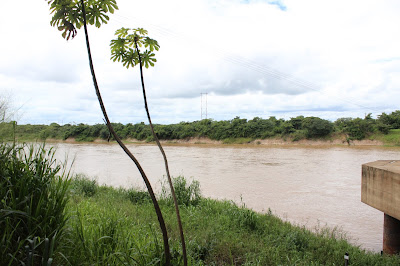A working group
of environmentalists, public agencies, universities, civil society sectors,
non-governmental organizations and indigenous communities gathered this morning
(January 18) at the Chico Mendes Institute of Biodiversity Conservation Office
- ICMBio, concerned With the preservation and recovery of the Itacaiúnas River,
whose purpose is to create the Itacaiúnas River Basin Committee and articulate
the holding of a large Seminar in mid-March 2017.
The Itacaiúnas
river is born in the Serra da Seringa in the municipality of Água Azul do
Norte. It is formed by the junction of the Água Preta and Azul river and flows
into the left bank of the Tocantins river in Marabá. Considered as a State
river, it is 390 km long and has a basin area of 42 thousand square kilometers.
Its tributaries include Madeira, Parauapebas River, Oneã River, Red
River, Aquiri River, Tapirapé River, Sororó River and Preto River.
As a result of
intense devastation of the forest, of riparian forests and even the pollution
that is thrown into bed, it is suffering and runs the risk of dying. The
Itacaiúnas was already very important for the municipality of Marabá, mainly
because it sheltered in its immense chestnut banks and reserve of rubber, a
kind of latex that was used in the past in medicine.
The discussion
went through strategies for holding the plenary later this month, convening
authorities and experts, riverine people, fishermen, indigenous communities, to
make a strong impact and raise awareness about what the river represents for
life, and water that We need, as well as animals, to live and the river
Itacaiúnas can not dry.
The theme of
preservation of the Itacaiúnas river has been gaining ground, an expedition
carried out in October 2015 by the Marabá House Culture Foundation led by
biologist Noé von Atzingen found that the river is drying up and in some
places, as seen in the expedition, there are points Completely dry and in
others the river was covered on foot for a 10 km stretch with very little
water. In addition to deforestation, there was a great deal of sedimentation
and reduction of rainfall in the region as contributors, besides the action of
man to worsen the situation.
 Green Ciranda Project
Green Ciranda Project
The Green Ciranda Project is a popular initiative, a work of a group idealized by André Vianello who has already mobilized hundreds of supporters throughout the local society. The project brings together the work of volunteers and public power, with enormous international visibility launched this year a video documentary S.O.S. Itacaiúnas, with images and testimonies of riverine and fishermen affected with the decrease of the fish and with the pollution that the man has been throwing in the bed of the river. The documentary can be seen on the blog: http://projetocirandaverdemaraba.blogspot.com.br/2017/01/assista-ao-filme-sos-rio-itacaiunas.html and, I say more, here begins a journey of protection, preservation Of Itacaiúnas river and has already started, the expected result will be the rescue and maintenance of the life of the river that has a meaning for me, life.





Nenhum comentário:
Postar um comentário
Observação: somente um membro deste blog pode postar um comentário.